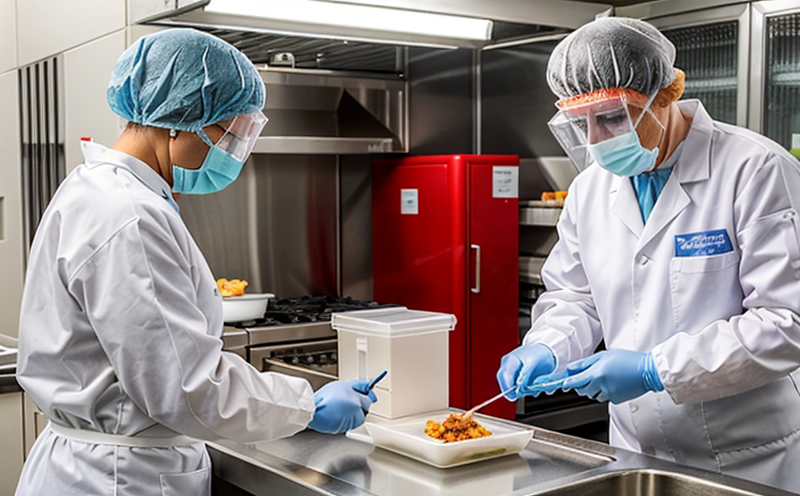AOAC 2013.07 Multiplex PCR for Norovirus and HAV in Soft Fruits
The AOAC Official Method 2013.07 is a multiplex polymerase chain reaction (PCR) technique that simultaneously detects the presence of norovirus and hepatitis A virus (HAV) in soft fruits. This method has become an essential tool for food safety professionals, particularly those working with fresh produce, as it allows for rapid screening to identify potential contaminants early in the supply chain.
Soft fruits such as strawberries, raspberries, blueberries, and others are highly perishable and can easily become contaminated during harvesting, transportation, or storage. The presence of pathogens like norovirus and HAV can lead to serious health issues if not addressed promptly. This method provides a reliable approach for detecting these viruses at levels as low as 10 genomic copies per gram (g) of fruit.
The AOAC 2013.07 method follows the principles outlined in ISO standards, ensuring consistency and accuracy across different laboratories. The use of multiplex PCR technology allows for simultaneous detection of multiple targets within a single reaction, reducing turnaround time and resource consumption compared to traditional single-target assays.
Specimen preparation involves thorough homogenization of the soft fruits using appropriate buffers followed by extraction procedures to release viral nucleic acids into solution form. The extracted samples are then subjected to reverse transcription if RNA-based viruses like norovirus are being tested for, before proceeding with the multiplex PCR process.
The assay employs real-time quantitative PCR technology which provides precise quantification of both norovirus and HAV within a single reaction tube. This not only speeds up the testing process but also ensures that any cross-contamination between samples is minimized due to their separate handling during preparation steps.
Results are typically available within 24 hours from receipt of the sample, providing quick feedback on whether further action is required regarding contaminated batches or lots of soft fruit. Compliance officers responsible for ensuring food safety standards meet this requirement by utilizing AOAC 2013.07 as part of their routine testing protocols.
For research and development (R&D) engineers involved in developing new varieties or improved harvesting techniques, knowing the effectiveness of these methods early on can lead to better decisions about which approaches might reduce contamination risks effectively without compromising yield or quality.
| Virus | Detection Limit (Genomic Copies per Gram) |
|---|---|
| Norovirus | 10 |
| Hepatitis A Virus | 50 |
The detection limits mentioned above are critical in ensuring accurate identification of pathogens even at low concentrations, thereby maintaining high standards of food safety.
R&D engineers might also use this information to design more resilient packaging solutions that can better protect against environmental factors that contribute to contamination. Similarly, procurement teams would benefit from knowing about these testing methods early on so they can source products from suppliers who adhere strictly to such stringent quality control measures.
Industry Applications
- Soft fruit growers and processors needing rapid identification of potential foodborne virus contamination in their products.
- Retailers looking for assurance that the produce they sell meets strict hygiene standards before reaching consumers' hands.
- Schools, hospitals, and other institutions serving meals prepared with soft fruits ensuring they are free from harmful viruses.
- Export companies dealing with international markets where stringent regulatory requirements apply regarding pathogen testing on imported goods.
The AOAC 2013.07 method is particularly useful in the context of produce that has undergone minimal processing, making it a vital tool for maintaining food safety standards across various sectors within the agricultural and horticultural industries.
Eurolab Advantages
At Eurolab, we offer unmatched expertise in performing AOAC 2013.07 testing with state-of-the-art equipment and trained personnel who understand both the technical aspects of the assay as well as its practical implications for food safety.
We provide comprehensive reports that not only detail the results of each test but also include recommendations based on those findings, helping clients make informed decisions regarding their operations. Our commitment to accuracy ensures consistent results across all samples analyzed according to this official method.
Environmental and Sustainability Contributions
- Reduces waste by enabling early detection of contaminated batches allowing for corrective actions before significant portions are compromised.
- Supports sustainable farming practices by promoting safer growing environments which lead to higher yields without compromising on quality or safety standards.
- Aids in reducing the carbon footprint associated with transporting potentially hazardous products through rapid testing and immediate disposal where necessary.
By adopting AOAC 2013.07, organizations contribute positively towards environmental stewardship while simultaneously enhancing their reputation for producing safe and high-quality food items.





